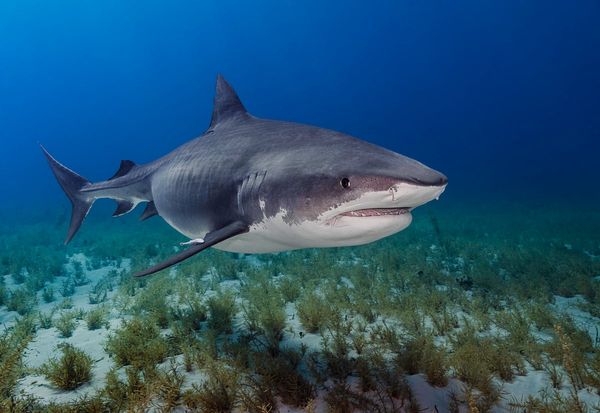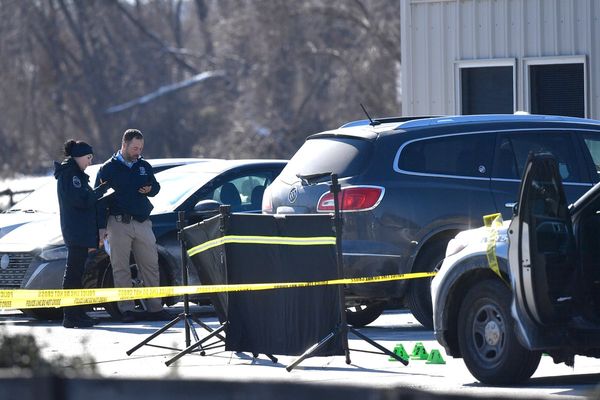An apex predator is being turned loose in bushland in northern Canberra — and every other animal in its path should be very concerned.
Ecologists are releasing two spotted-tailed quolls, otherwise known as tiger quolls, into the Mulligan's Flat Woodland Sanctuary, where they will head straight to the top of the food chain.
The sanctuary is a 1,253-hectare piece of woodland on Canberra's northern fringe, protected by an electrified fence to keep feral pests outside.
For more than a decade, scientists have been re-introducing species that had been declared locally extinct — like eastern bettongs, curlews, New Holland mice and eastern quolls.
But scientists are now releasing spotted-tailed quolls — a fearsome, hungrier, cousin of eastern quolls — in an attempt to teach some of the endangered species how to survive among predators.
The toothy marsupials set to reign supreme in the sanctuary are named Boofhead and Sid — the latter after Sex Pistols' rocker Sid Vicious, who had a similar feisty attitude.
"It's time to go for something bigger," sanctuary manager Simon Stratford said.
Quolls will 'mop up' other endangered animals
The carnivorous marsupials are known to live in the Kosciuszko National Park, several hundred kilometres south, but wild quolls have only been rarely seen in northern parts of the ACT over recent decades.
Ecologist Millie Sutherland Saines said only two desexed males were being released into the sanctuary for now, although there were plans to gradually increase the numbers and introduce a breeding population.
"They're related to Tassie devils. So they've got rather large teeth," Ms Sutherland Saines said.
But just how the resident wildlife population will react to having a hungry predator thrown into the food chain — particularly the eastern bettongs which are technically extinct in the wild on mainland Australia — remains to be seen.
"I think the biggest question with bringing in a big apex predator is will they eat all of the bettongs? I highly doubt that two males will eat 120 bettongs inside Mulligan's Flat," she said.
But ecologists say there is a very good reason to sacrifice some of the endangered population: to breed a more 'street-smart' bettong.
"That's ultimately going to make our bettong population a bit more predator-savvy, because they've had no predator for almost 10 years now," Ms Sutherland Saines said.
She added that could help ensure the marsupial's survival if researchers ever tried to release any more of the bettongs into the wild.
But why not introduce dingoes, long-regarded as Australia's highest-order land predator?
Mr Stratford said wild dogs were just too controversial, within howling-distance of suburbia.
"In many ways, we'd love to reintroduce them here, but in others, not so much. We've heard public feedback that a lot of people aren't interested in seeing dingoes right on their property boundaries," he said.
Quolls once considered pests
Melbourne author Harry Saddler, who wrote the book Questions Raised by Quolls, said quolls were once so plentiful on mainland Australia that early settlers hunted them to protect their domestic chickens.
"There are colonial descriptions that you can read that describe quolls as being one of the most numerous animals in the bush," Mr Saddler said.
"And these are descriptions that are written just before foxes were introduced into Australia."
He said that so-called "acclimatisation societies" were formed in the 1800s to import European species to make new Australian settlers feel more "at home".
And, ironically, early attempts to introduce rabbits to Australia were thwarted by the sheer number of quolls.
Ultimately, a combination of hunting and feral pests like cats and foxes drove eastern quolls to extinction on the mainland, while spotted-tailed quolls clung on in fragmented populations.
But Mr Saddler said he was encouraged by places like Mulligan's Flat, which aimed to rebuild ecosystems.
"So much of the story of the environment and wildlife in Australia is one of loss and destruction," he said.
"So it's really heartening to see people work so hard in reversing that trend."
Will we ever see bettongs or quolls in the wild again?
By any measure, Mulligan's Flat Woodland Sanctuary has been a scientific success story — it has reintroduced locally extinct species, and become a tourism drawcard in the process.
ACT Environment Minister Rebecca Vassarotti is confident that — one day — the scientific research taking place at Mulligan's Flat can have real-world applications.
It is hoped that endangered species can be bred up and released into natural pockets of bushland to claw their way back from the brink.
"But we need to do that through experimentation and research and taking risks which is actually a really important part of the research project."
And sanctuary manager, Mr Stratford agrees.
"It's my dream to be able to show my kids quolls and other animals on Mount Majura or Black Mountain," he said.
"It's something I didn't get to experience as a kid. And I'd love my children to be able to see that sometime in the future."







